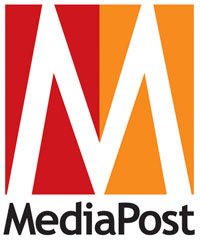Media budgets may be declining, but Google Trends data and revenue
numbers released by Bloomreach on Monday shows revenue from the sale of certain items skyrocketing. Sales of respirator masks and zinc are on the rise as Americans grasp for ways to protect themselves
and loved ones from an outbreak. And it’s all happening without the use of paid advertising. What about search engine optimization?
Google searches for the term “coronavirus”
continue to spike in the United States, according to data from Google Trends. Washington, Hawaii, the District of Columbia, California, and Oregon are leading in the number of searches.
The
surge in online revenue sales data for commonly stockpiled items also is being prompted by the growing number of COVID-19 coronavirus confirmed cases discovered in the United States.
Bloomreach customer data, pulled between Feb. 23 and Feb. 29, 2020, includes more than 250 retailers such as the second-largest U.S. supermarket Albertsons, which last week filed the paperwork to take the company through an Initial Public Offering.
advertisement
advertisement
Revenue from respirator masks
rose 590% in the United States, compared to the week prior.
Revenue from hand sanitizer sales rose 420%; Clorox and Lysol wipes, 184%; canned food, 183%; disinfectants, 178%; gloves, 151%; and
pasta, 99% compared with the week prior.
Revenue from paracetamol (acetaminophen) sales rose 90%; Pedialyte and Gatorade, rose 82%; bottled and
packaged water, 78%; vitamins, 78%; tissues, 43%; hand soap, 33%; toilet paper and paper towels, 26%; and zinc supplements, 9%.
“If you sell relevant products to treat and prevent novel
coronavirus, focus on what is most important to your customers right now,” said Brian Walker, chief strategy officer at Bloomreach.
Walker suggests:
Ensure product information
is accurate. Unfortunately, there is a lot of misinformation and inaccurate claims out there. Customers need to know the facts about products, down to very specific details such as percentage
of alcohol in a sanitizer or the molecule size that may pass through a mask or filter.
Build relevant, fact-based and accurate content that advises customers. Customers want to know how
effective products are and how to use them to prevent infection. People are depending on accurate information for their health. Rich content and relevant links to medical and scientific authorities
may be an important help, and that is true even if you do not sell and market relevant products.
Ensure that these products are easy to discover. Make sure search strategies get people
to the right products and suppress products that are not appropriate.
Ensure that out-of-stock items are clearly marked and cannot be ordered. This seems obvious, but not all
systems are as well integrated as they should be. Having these products still appear in search and category listings with “sold out” — and when you expect the back-order or resupply to
become available — may be a better service to your customers than simply removing them, as it will save customers time and aggravation. And while it may seem anathema to common business practices,
consider the goodwill of helping customers find these products, even if it is from a competitor.
We’ve all seen shortages of certain items in stores, with mega retailers like Costco
putting a limit of five on the number of toilet-roll packages consumers can buy. Brands probably are not going to spend money on advertising if the products are flying off the store shelves.
Bloomreach’s technology powers on-site search and merchandising, giving it access to real-time searches and sales. The data includes revenue-based online sales across the globe, with a strong U.S.
showing.
Here’s an interesting article found by Tameka
Kee, a former MediaPost journalist, on coronavirus written by Malia Jones, PhD, MPH and an assistant scientist in Health Geography at the Applied Population Laboratory at the University of Wisconsin-Madison.
